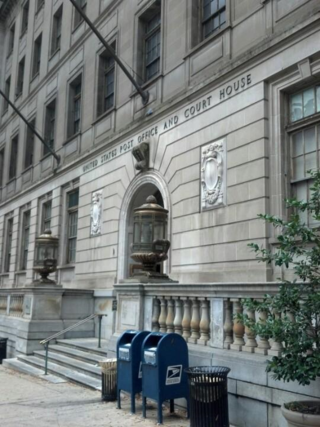A Jury of Your Peers

I was called to jury duty recently. I actually rescheduled from my first date of April 29, which as it turns out was a day that the courts were closed due to the recent violence in Baltimore City. So when my day came, off I went to the beautiful courthouse located in downtown Baltimore City. The Clarence M. Mitchell Jr. Courthouse opened in 1900 and is now covered in mesh netting so that nothing falling off the building can hurt anyone.
I was one of 1,200 people called for jury duty on this normal Tuesday morning in Baltimore. The juror pool was a diverse group of people, across races, classes and religion. Yet missing from the jury pool were young black men. I saw older black men and women, young women, but not many young black men. Now I can’t say that I personally saw all the jurors, but that morning in the introduction to juror service was this reminder; “If you have been convicted of a crime punishable by more than six months in prison, were sentenced to more than six months in prison and have not been pardoned, or have criminal charges pending for a crime that is punishable by more than six months in prison, you cannot serve on a jury in Baltimore city.”
Now, let me tell me you a little about Baltimore. Baltimore, although it has an affluent region surrounding the city, is a poor city, where the average per capita income is about $24,750.1 It is a city of neighborhoods; neighborhoods that have been shaped over the years by redlining and covenants that restricted who could buy property in a community; neighborhoods are still reeling from predatory loan practices of many years ago. Two neighborhoods that have been in the news recently are the Sandtown–Winchester neighborhood and the Mondawmin neighborhood. Sandtown–Winchester is where Freddie Gray was born, raised, and killed. Mondawmin is a neighboring community that suffered greatly from the rioting on April 27.
Three percent of Sandtown-Winchester’s nearly 15,000 residents are in state prison, according to a joint report by the Justice Policy Institute and the Prison Policy Initiative.2 The bordering neighborhood of Mondawmin has a similarly high incarceration rate. Baltimore overall has an incarceration rate of 1,255 per 100,000 residents (1.25 percent). Maryland’s incarceration rate is just 383 per 100,000 residents (0.38 percent) and the incarceration rate for the United States is 455 of 100,000 residents (0.46 percent). One of 10 Maryland residents is from Baltimore, but one of three Maryland residents in state prison is from the city.
Sandtown–Winchester has the highest rate of its population in prison, and it is 96.6 percent Black/African American. The community in Baltimore with the lowest rate of residents in prison is Greater Roland Park/Poplar Hill, which is 77.5 percent White, 9.8 percent Asian, and 7.9 percent Black/African American.
How can a young black man get a jury of his peers when so many of his peers are either in jail or are excluded from service on the jury due to their incarceration? Is it any wonder young black men in Baltimore don’t believe in the justice system?
1. U.S. Census Bureau, “Baltimore City,” State and County Quick Facts; https://www.census.gov/quickfacts/qfd/states/24/24510.html, accessed May 14, 2015.
“2. Mapping Baltimore’s Corrections and Community Challenges,” introduction to The Right Investment?: Corrections Spending in Baltimore City, a report published in February 2015 by the Justice Policy Institute and the Prison Policy Initiative; www.prisonpolicy.org/origin/md/report.html; accessed May 14, 2015.
Tanya Denley is a teaching elder in Baltimore and serves as a PC(USA)-trained antiracism facilitator on the Antiracism Committee of Presbyterian Women’s Churchwide Coordinating Team.
